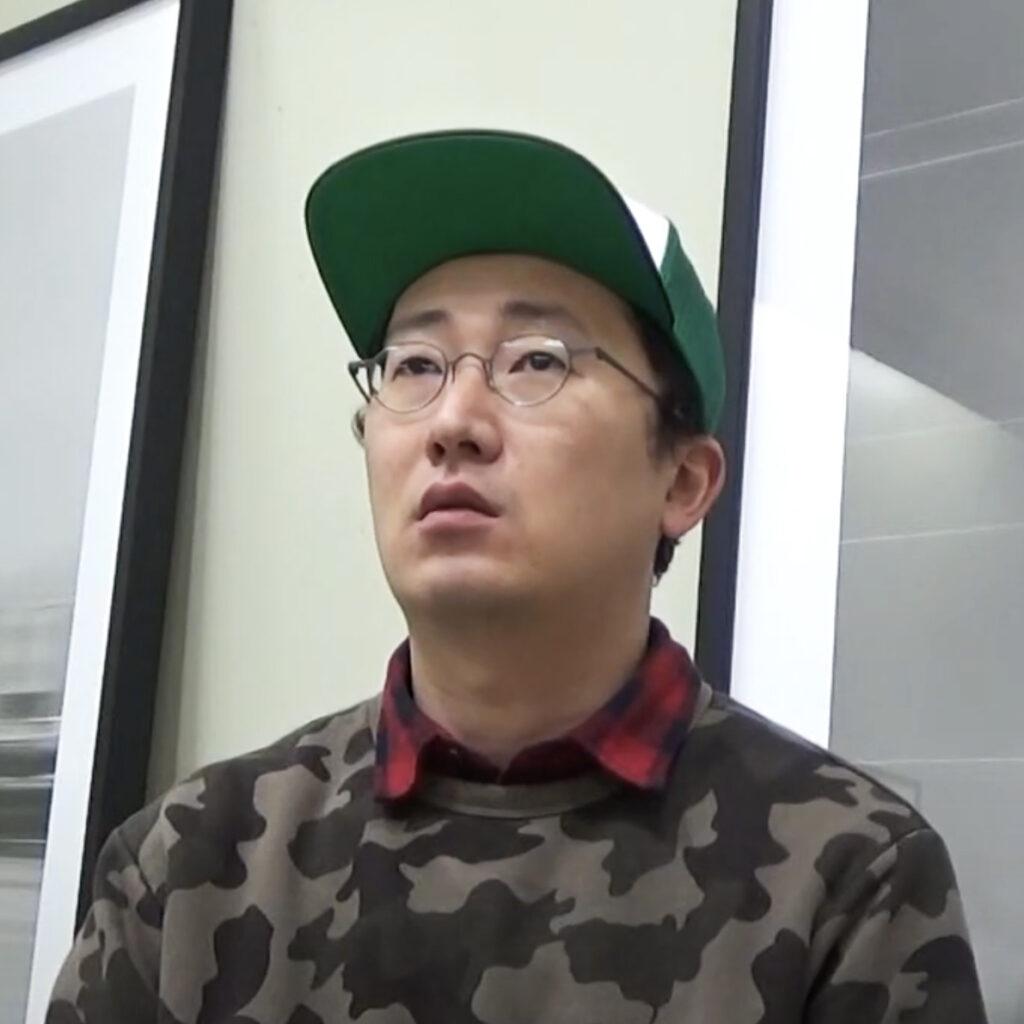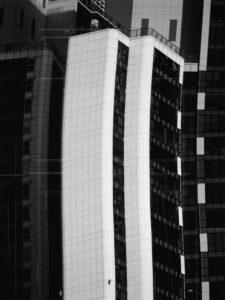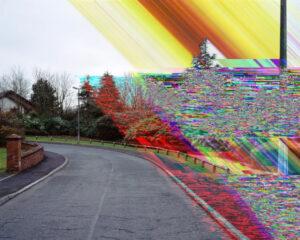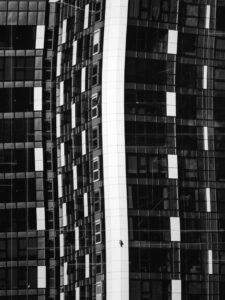






Kim Chunsoo received BFA from Chung-Ang University (2007) in Photography and achieved MFA at Glasgow School of Art (2012). He currently lives and works in Seoul.
Kim Chunsoo is interested in small errors that occur between things that normally operate, and reproduce them by using a camera. In addition, he wants to reveal the vulnerabilities and imperfections that are inherent in modern society through photography.
Based on this, he is constantly exploring new meanings and scalability of contemporary photography while paying attention to various fields such as historical events and digital imaging technology.
- Works for Sale
- Artistic Career
- World of Work
- Activity
'Low-cut' & 'Low-pass' Series
'Low-cut' & 'Low-pass' Series
Solo Exhibitions (Brief)
Kim Chunsoo has held five solo exhibitions until the present. In 2007, he was selected for the Spacevava ‘Portfolio Review’ contest and held his first solo exhibition at Spacevava(Seoul, Korea).
He won the Ilwoo Photography Award for the series of ‘Low-cut’ and ‘Low-pass’, and held a solo exhibition at Ilwoo Space (Seoul, Korea) as a recipient in 2018.
He presented a series of ‘ALPS’ in SPACE 22(Seoul, Korea) in 2019 and a series of ‘Low-cut’ in BMW Photo Space(Busan, Korea) in 2020.
Group Exhibitions (Brief)
Kim Chunsoo has been participated in a wide range of group exhibitions held at PROJECT ROOM SINPO(Incheon, Korea), OCI Museum(Seoul, Korea), Seoul Museum of Art(Seoul, Korea), The Reference(Seoul, Korea), Kunstquartier Bethanien Berlin(Berlin, Germany) and China Central Academy of Fine Arts(Beijing, China).
Awards (Selected)
Kim Chunsoo received the 9th Ilwoo Photography Award(Ilwoo Foundation, Korea) and at Academy Lights Award(China Central Academy of Fine Arts, China).
Collections (Selected)
His works are in collections of various museums such as Seoul Metropolitan Government(Seoul, Korea), GoEun Museum of Photography(Seoul, Korea), National Museum of Modern and Contemporary Art(Seoul, Korea), Seoul Museum of Art(Seoul, Korea) and Houston Museum of fine Art(Houston, USA).
'Low-cut' & 'Low-pass' Series
'Low-cut' & 'Low-pass' Series
Originality & Identity
A common illusion of people about digital media is that it will be a perfect world of elaborate orders and operations. About this misunderstanding, Kim Chunsoo tries to show how fragile the technology is to reproduce digital images and photos, considered to be impeccable but also how easily they can be distorted and destroyed. The artist reveals the fragility of modern society via his exploration of highly developed photographic media and digital imaging technology.
“The world is imperfect, and therefore the photographs that represent it are inevitably imperfect as well.”
The artist has an interest in ‘small errors’ that occur between objects that work normally. Conflicts over terrorist incidents around the world and urban development are also kinds of errors caused by malfunctioning our social systems.
Kim Chunsoo compares this state of social defect to the error of digital images, illustrating that the digital world and the real world are not fundamentally different. Minor small errors spread throughout the pixelated image and overcrowded urban society.
The artist Kim Chunsoo compares and inserts the errors of distorted images and photos. Moreover, ordinary photographers try to hide in the foreground of their works, and actively transform them by intervening in the photographic images.
In his early works, the perspective of the artist was floating in a virtual space, an unknown place, or past events. In his recent works that visually show the error and distorted modes, he seems to be ending a clearer warning to the real world. By visiting the real site of social events and distorting the recorded images, the artist visualizes the direct image of the vivid world.
He describes the kind of pictorial transformation that occurs in the process of this work as ‘the additional new aesthetic factor,’ and says that heterogeneous elements symbolically reflect people’s different perceptions of the event.
The artist, Kim Chunsoo, can deal with a topic as stories themselves. It is about contemplating one’s responsibilities as an artist through social space and issues.
He mourns the tragedy while viewing the issues of the forgotten past. At the same time, he faces different positions on the same event with a sober perspective. The audiences can look back at today themselves through his arts which unravels a multi-layered story with a continuum of the stories.
Style & Contents
In his early work, Kim Chunsoo transformed digital images by capturing landscapes in 3D online games or downloading photos posted by anonymous people on the internet, editing and retouching the images.
Over time, when he studied abroad, the artist increasingly used images that he took himself rather than using other’s filming. The intervention in the image was also developed in a way to look into and touch the operation process of the digital photographic image.
In the ‘First as Tragedy, Then as Farce(or Comedy)’ (2011~2012) series, Kim Chunsoo filmed the actual scenes of terrorist incidents in the UK in the 1970s and 1990s. He used a code editor program to edit the hexadecimal codes hidden in digital images.
The image of the original version of photography is distorted by the code change as a result of the terrorist’s action. The visual cracks of noise-converting images illustrate the internal image of history hidden in the background location.
Meanwhile, the ‘Low-cut’ (2018~ ) and ‘Low-pass’ (2018~ ) series show the physical limitations and errors of highly developed digital photography equipment, paying attention to the tools that actual pictures were taken.
The electronic shutter of a digital camera prevents vibration caused by shutter closing, but the image is easily shaken or distorted due to the data processing delay caused by the slow scan speed. In the ‘Low-cut’ series, a high-rise apartment located in Seongsu-dong, Seoul, was photographed distortedly and white ink was used to bounce ink on the printed image to show the change of space before the current building was built.
〈 Low-pass 〉 is a photograph taken with the light completely blocked. The image sensor of a digital camera reads the light intervening in the camera and converts it from an analog to a digital signal. Since it was shot without light, the printed result should be a completely black image, but in reality, the colourful pixels glowed like in the night sky. The noise generated by the heat of the image sensor increases with higher resolution images.
All of the artist’s work is set in a place where people gather and meet, even if the specific material, method of intervention, and the working principles of the image expressed are different. The artist talks about events and situations that occur between people and the desires, power distances, and relationships are shown.
Constancy & Continuity
Both modern society and digital technology are not perfect in the end. How will technology record history in a digital space overwhelm with information and images? Kim Chunsoo’s work shows the artist’s macroscopic notions of society and the world and at the same time spurs a media aesthetic discourse on photography.
He explores the nature and the principle of the images within the world of filming, and we can see his sense of work showing the expanding concept and the limit of photography, breaking away from the traditional form of photography. Audiences will be able to guess the presence of photography as a new art form in the new media era through Kim Chunsoo’s works.
His work not only closely observes and deals with the features of photographic technology but also expands aesthetically through artistic settings. Outside of his work, he actively communicates with viewers via various exhibition techniques. What is most surprising is that the artist is constantly showing new visual forms.
Kim Chunsoo tries not to stay in a static style of photography but exploits various features: The papers with hexadecimal numbers of digital image codes are written with a fountain pen; heterogeneous layers are added to photographs by bouncing ink lines similarly used in construction sites; pixels are transferred to aluminum panels. This is the point where the audience can look forward much more to expect the artist’s next artworks.
'Low-cut' & 'Low-pass' Series
'Low-cut' & 'Low-pass' Series
'Low-cut' & 'Low-pass' Series
'Low-cut' & 'Low-pass' Series
- Works for Sale
- Artistic Career
- World of Work
- Activity
'Low-cut' & 'Low-pass' Series
'Low-cut' & 'Low-pass' Series
Solo Exhibitions (Brief)
Kim Chunsoo has held five solo exhibitions until the present. In 2007, he was selected for the Spacevava ‘Portfolio Review’ contest and held his first solo exhibition at Spacevava(Seoul, Korea).
He won the Ilwoo Photography Award for the series of ‘Low-cut’ and ‘Low-pass’, and held a solo exhibition at Ilwoo Space (Seoul, Korea) as a recipient in 2018.
He presented a series of ‘ALPS’ in SPACE 22(Seoul, Korea) in 2019 and a series of ‘Low-cut’ in BMW Photo Space(Busan, Korea) in 2020.
Group Exhibitions (Brief)
Kim Chunsoo has been participated in a wide range of group exhibitions held at PROJECT ROOM SINPO(Incheon, Korea), OCI Museum(Seoul, Korea), Seoul Museum of Art(Seoul, Korea), The Reference(Seoul, Korea), Kunstquartier Bethanien Berlin(Berlin, Germany) and China Central Academy of Fine Arts(Beijing, China).
Awards (Selected)
Kim Chunsoo received the 9th Ilwoo Photography Award(Ilwoo Foundation, Korea) and at Academy Lights Award(China Central Academy of Fine Arts, China).
Collections (Selected)
His works are in collections of various museums such as Seoul Metropolitan Government(Seoul, Korea), GoEun Museum of Photography(Seoul, Korea), National Museum of Modern and Contemporary Art(Seoul, Korea), Seoul Museum of Art(Seoul, Korea) and Houston Museum of fine Art(Houston, USA).
'Low-cut' & 'Low-pass' Series
'Low-cut' & 'Low-pass' Series
Originality & Identity
A common illusion of people about digital media is that it will be a perfect world of elaborate orders and operations. About this misunderstanding, Kim Chunsoo tries to show how fragile the technology is to reproduce digital images and photos, considered to be impeccable but also how easily they can be distorted and destroyed. The artist reveals the fragility of modern society via his exploration of highly developed photographic media and digital imaging technology.
“The world is imperfect, and therefore the photographs that represent it are inevitably imperfect as well.”
The artist has an interest in ‘small errors’ that occur between objects that work normally. Conflicts over terrorist incidents around the world and urban development are also kinds of errors caused by malfunctioning our social systems.
Kim Chunsoo compares this state of social defect to the error of digital images, illustrating that the digital world and the real world are not fundamentally different. Minor small errors spread throughout the pixelated image and overcrowded urban society.
The artist Kim Chunsoo compares and inserts the errors of distorted images and photos. Moreover, ordinary photographers try to hide in the foreground of their works, and actively transform them by intervening in the photographic images.
In his early works, the perspective of the artist was floating in a virtual space, an unknown place, or past events. In his recent works that visually show the error and distorted modes, he seems to be ending a clearer warning to the real world. By visiting the real site of social events and distorting the recorded images, the artist visualizes the direct image of the vivid world.
He describes the kind of pictorial transformation that occurs in the process of this work as ‘the additional new aesthetic factor,’ and says that heterogeneous elements symbolically reflect people’s different perceptions of the event.
The artist, Kim Chunsoo, can deal with a topic as stories themselves. It is about contemplating one’s responsibilities as an artist through social space and issues.
He mourns the tragedy while viewing the issues of the forgotten past. At the same time, he faces different positions on the same event with a sober perspective. The audiences can look back at today themselves through his arts which unravels a multi-layered story with a continuum of the stories.
Style & Contents
In his early work, Kim Chunsoo transformed digital images by capturing landscapes in 3D online games or downloading photos posted by anonymous people on the internet, editing and retouching the images.
Over time, when he studied abroad, the artist increasingly used images that he took himself rather than using other’s filming. The intervention in the image was also developed in a way to look into and touch the operation process of the digital photographic image.
In the ‘First as Tragedy, Then as Farce(or Comedy)’ (2011~2012) series, Kim Chunsoo filmed the actual scenes of terrorist incidents in the UK in the 1970s and 1990s. He used a code editor program to edit the hexadecimal codes hidden in digital images.
The image of the original version of photography is distorted by the code change as a result of the terrorist’s action. The visual cracks of noise-converting images illustrate the internal image of history hidden in the background location.
Meanwhile, the ‘Low-cut’ (2018~ ) and ‘Low-pass’ (2018~ ) series show the physical limitations and errors of highly developed digital photography equipment, paying attention to the tools that actual pictures were taken.
The electronic shutter of a digital camera prevents vibration caused by shutter closing, but the image is easily shaken or distorted due to the data processing delay caused by the slow scan speed. In the ‘Low-cut’ series, a high-rise apartment located in Seongsu-dong, Seoul, was photographed distortedly and white ink was used to bounce ink on the printed image to show the change of space before the current building was built.
〈 Low-pass 〉 is a photograph taken with the light completely blocked. The image sensor of a digital camera reads the light intervening in the camera and converts it from an analog to a digital signal. Since it was shot without light, the printed result should be a completely black image, but in reality, the colourful pixels glowed like in the night sky. The noise generated by the heat of the image sensor increases with higher resolution images.
All of the artist’s work is set in a place where people gather and meet, even if the specific material, method of intervention, and the working principles of the image expressed are different. The artist talks about events and situations that occur between people and the desires, power distances, and relationships are shown.
Constancy & Continuity
Both modern society and digital technology are not perfect in the end. How will technology record history in a digital space overwhelm with information and images? Kim Chunsoo’s work shows the artist’s macroscopic notions of society and the world and at the same time spurs a media aesthetic discourse on photography.
He explores the nature and the principle of the images within the world of filming, and we can see his sense of work showing the expanding concept and the limit of photography, breaking away from the traditional form of photography. Audiences will be able to guess the presence of photography as a new art form in the new media era through Kim Chunsoo’s works.
His work not only closely observes and deals with the features of photographic technology but also expands aesthetically through artistic settings. Outside of his work, he actively communicates with viewers via various exhibition techniques. What is most surprising is that the artist is constantly showing new visual forms.
Kim Chunsoo tries not to stay in a static style of photography but exploits various features: The papers with hexadecimal numbers of digital image codes are written with a fountain pen; heterogeneous layers are added to photographs by bouncing ink lines similarly used in construction sites; pixels are transferred to aluminum panels. This is the point where the audience can look forward much more to expect the artist’s next artworks.





